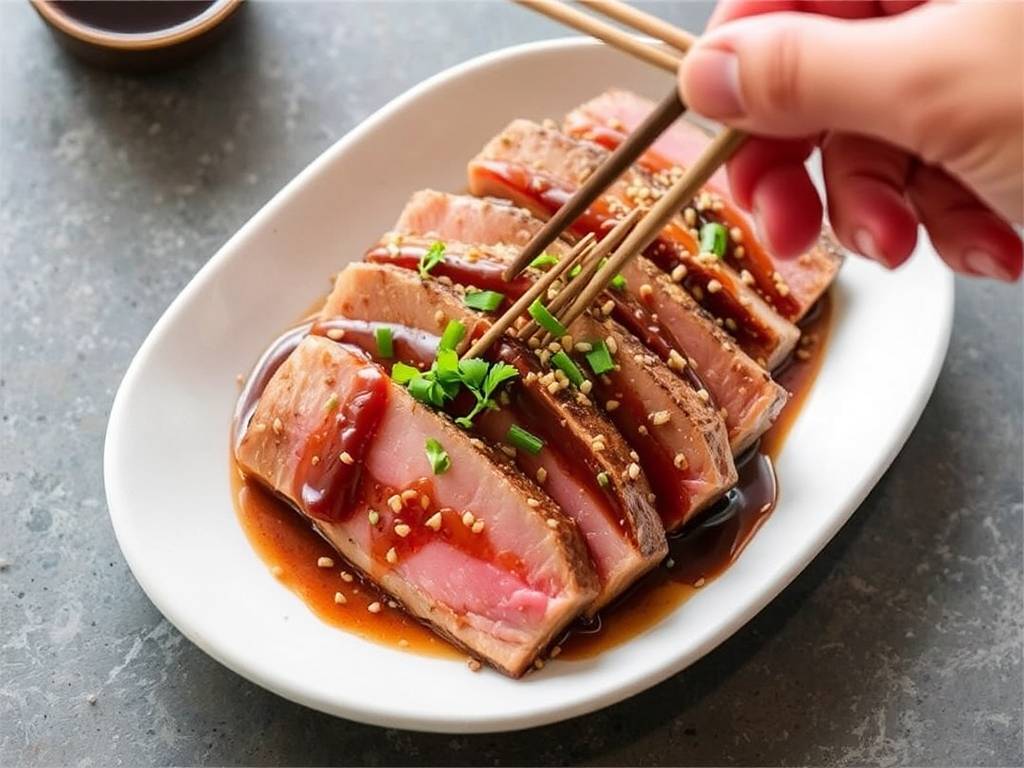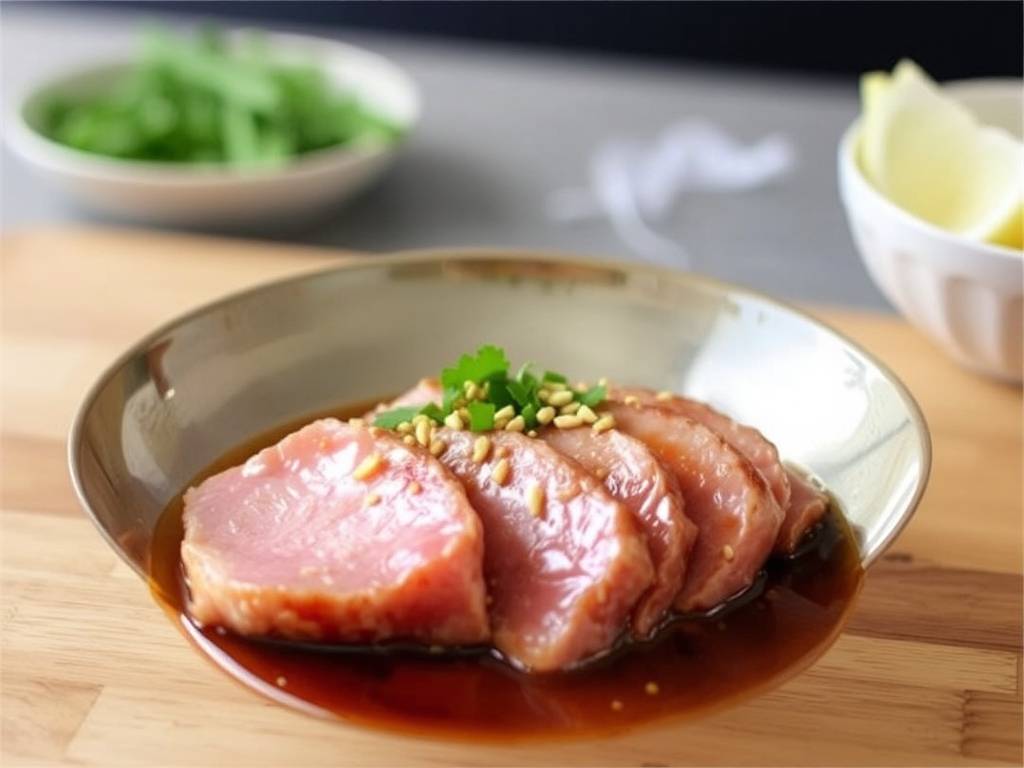The Ultimate Guide to Perfect Pan-Seared Tuna Steak with Savory Soy and Sesame Glaze
There's something truly special about a beautifully cooked tuna steak. When done right, it’s a restaurant-quality dish that feels both luxurious and surprisingly simple to create in your own kitchen. If you've ever been intimidated by cooking high-quality tuna, fear not. This comprehensive guide will walk you through every single step, from selecting the perfect cut to mastering the sear and whipping up an unforgettable soy and sesame sauce that will become your new go-to.

Let's start with the star of the show: the tuna itself. Not all tuna steaks are created equal. For this recipe, you'll want a thick-cut steak, at least one inch thick. Look for bright, ruby-red flesh that smells fresh and clean, like the ocean, with no strong fishy odor. The best cuts for searing are Ahi (Yellowfin) or the more premium Bigeye. These varieties have a firm texture and rich flavor that stand up perfectly to high heat. A key longtail keyword to remember when shopping is "selecting the best fresh tuna steak for searing." Avoid steaks that look brownish or have a lot of white connective tissue running through them.

Before we even think about the pan, preparation is everything. Take your tuna steaks out of the refrigerator about 15-20 minutes before cooking. Allowing them to come closer to room temperature is a crucial step for "achieving an even sear on tuna steak." If you put a cold steak into a hot pan, the outside will cook too quickly while the inside remains unpleasantly cold. Pat the steaks completely dry with paper towels. This is non-negotiable! Moisture is the enemy of a good sear; it creates steam and prevents that beautiful, crispy crust from forming.
Now, for the marinade and sauce that will elevate your dish. Our soy and sesame sauce is a beautiful balance of umami, sweetness, and nutty richness. In a bowl, whisk together:
- 1/4 cup of low-sodium soy sauce (this gives you control over the saltiness)
- 2 tablespoons of toasted sesame oil (this is essential for that deep, nutty flavor)
- 1 tablespoon of rice vinegar or fresh lime juice for a touch of acidity
- 1 tablespoon of honey or maple syrup to balance the saltiness
- 1 teaspoon of freshly grated ginger
- 1 small garlic clove, minced
- 1 teaspoon of sesame seeds
This versatile sauce acts as both a marinade and a finishing glaze. Pour about half of this mixture over your dried tuna steaks, ensuring they are lightly coated. Let them marinate for no more than 10-15 minutes. Any longer and the acid in the vinegar or lime juice will start to "cook" the exterior of the tuna, changing its texture. Reserve the other half of the sauce for serving.
Cooking time! This is where the magic happens. The goal is a perfectly seared crust with a rare to medium-rare interior. Heat a heavy-bottomed skillet (cast iron is ideal) over medium-high to high heat until it is screaming hot. You should see a faint wisp of smoke. Add a high-smoke-point oil like avocado oil or grapeseed oil—just enough to coat the bottom of the pan.
Remove the tuna steaks from the marinade, letting any excess drip off, and carefully place them in the hot pan. You should hear a confident sizzle. The key here is "how to cook tuna steak perfectly medium-rare." Do not move the steaks! Let them sear undisturbed for about 60-90 seconds to form that gorgeous crust. For a 1-inch thick steak, searing for 90 seconds per side will typically yield a perfect medium-rare, where the inside is still mostly red and warm. If you prefer it more towards rare, aim for 60 seconds. For a more cooked medium, go for 2 minutes per side. Use a thin spatula to flip the steaks and sear the other side for the same amount of time. Remember, the tuna will continue to cook a little from residual heat after it's off the pan, a concept known as "carryover cooking."
Once seared to your liking, immediately transfer the tuna steaks to a clean cutting board. Let them rest for a few minutes. This allows the juices to redistribute throughout the steak, ensuring every bite is moist and flavorful. This addresses the common problem of "preventing dry tuna steak when pan-searing."
While the tuna rests, you can quickly turn your reserved soy-sesame sauce into a warm glaze. Pour it into the still-hot pan (be careful, it may splatter) and let it simmer for 30-60 seconds until it slightly thickens. This pan sauce will be incredibly flavorful, having picked up all the delicious browned bits from searing the tuna.
To serve, slice the rested tuna steak against the grain into half-inch thick slices. This makes it easier to eat and presents beautifully. Drizzle the warm soy and sesame glaze over the top and garnish with extra sesame seeds and some sliced green onions. This dish is fantastic served over a bed of jasmine rice, with a side of steamed bok choy or a simple cucumber salad to complement the rich flavors.
Storing leftovers is simple, though this dish is best enjoyed fresh. If you have any, "the best way to store and reheat cooked tuna steak" is to let it cool completely, store it in an airtight container in the refrigerator for up to 2 days. Be aware that it will continue to cook slightly when reheated, so it's best enjoyed cold in a salad or very gently warmed. Microwaving will make it rubbery.
So, there you have it. With this guide, you have all the tools and techniques for "creating an easy gourmet tuna steak dinner at home." It’s a quick, healthy, and deeply satisfying meal that is sure to impress. Happy cooking






发表评论